The Harpy Eagle (Harpia harpyja) stands as one of nature’s most formidable aerial predators, commanding respect throughout the rainforests of Central and South America. While its impressive wingspan and striking facial disk often capture immediate attention, it’s the eagle’s extraordinary talons that truly set this raptor apart in the avian world. These remarkable appendages represent evolutionary perfection—biological tools honed over millennia for hunting in dense forest canopies. For birdwatchers and wildlife enthusiasts, understanding the Harpy Eagle’s talons offers deeper insight into raptor adaptations and predatory specialization. This article explores ten fascinating aspects of these massive talons that highlight why they deserve particular attention and what they reveal about this magnificent bird’s ecological role and hunting prowess.
The Remarkable Size Comparison

The Harpy Eagle possesses talons that measure between 3-4 inches (7.6-10.2 cm) in length—comparable to the claws of a grizzly bear despite the bird weighing merely 20 pounds. This extraordinary disproportion becomes even more impressive when compared to human hands, as a Harpy’s rear talon often exceeds the length of an adult human’s middle finger. The eagle’s largest talon—the hallux or rear-facing digit—can reach nearly 5 inches in some specimens, making it the largest talon of any living eagle species. These measurements aren’t just impressive statistics; they represent critical adaptations that allow these birds to lift prey weighing as much as their own body weight through dense forest canopies.
Unparalleled Gripping Power

The gripping force generated by Harpy Eagle talons ranks among the most powerful in the animal kingdom, with estimates suggesting they can exert over 530 pounds per square inch (psi) of pressure. This crushing strength allows them to instantly pierce vital organs of their prey, causing immediate immobilization or death. The biomechanics behind this force involves specialized tendons and lock-in mechanisms that enable the eagle to maintain grip without continuous muscular effort. For comparison, this gripping power significantly exceeds that of golden eagles (400 psi) and dwarfs a human hand’s grip strength (100-150 psi), demonstrating the evolutionary specialization that makes Harpy Eagles such efficient predators. This tremendous force is particularly necessary when capturing prey in mid-canopy, where the bird has limited space to maneuver and must secure its quarry instantly.
The Deadly Hunting Mechanism
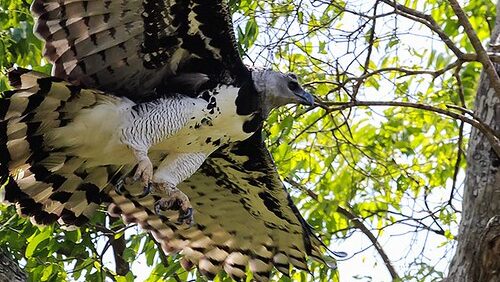
Harpy Eagle talons function as a sophisticated hunting system perfectly evolved for capturing prey in dense rainforest environments. Upon spotting potential prey, the eagle silently approaches and extends its massive feet forward in the final moments of attack, spreading its toes to maximize striking surface area. The impact force alone can stun or kill smaller prey, while the rear talon often delivers a fatal piercing blow to the skull or spine of larger animals. Unlike some raptors that rely on sustained squeezing to suffocate prey, the Harpy’s talons are primarily piercing weapons that cause catastrophic internal damage. This hunting mechanism allows the eagle to dispatch monkeys, sloths, and other arboreal mammals quickly and efficiently, often before they have an opportunity to seek refuge in denser vegetation.
Specialized Talon Anatomy
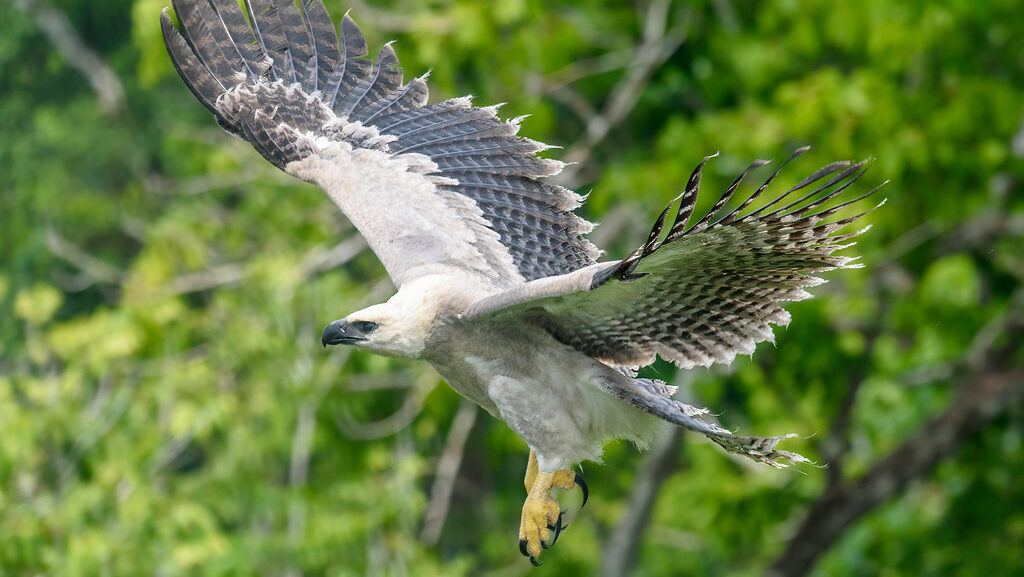
The anatomy of Harpy Eagle talons reveals remarkable specialization beyond their impressive size. Each foot contains four digits arranged in an opposing configuration, with three forward-facing toes and one reversed hallux creating a grasping mechanism optimized for seizing prey. The talons feature a curved design that follows a nearly perfect logarithmic spiral, creating ideal biomechanical leverage for both piercing and gripping prey. Beneath the keratinous outer layer lies a complex bone structure reinforced with specialized collagen fibers that provide both strength and flexibility to withstand the stresses of capturing struggling prey. The talon tips maintain exceptional sharpness through continuous growth and wear patterns that create self-sharpening edges—a feature particularly important for penetrating the thick fur and hide of sloths and other rainforest mammals.
Adaptations for Arboreal Hunting
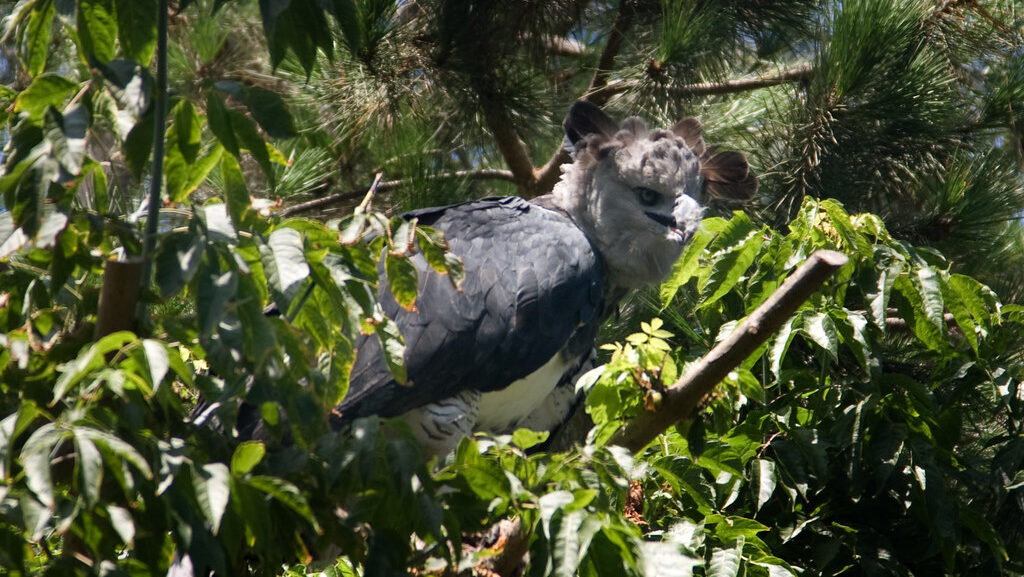
Harpy Eagle talons display specific adaptations tailored for hunting in the three-dimensional environment of forest canopies. The pronounced curve of each talon creates optimal hooking capability for extracting prey from branches, vines, and other complex vegetation structures where many rainforest animals seek refuge. Extra-thick scales cover the feet and lower legs, providing protection against the bites and scratches of struggling prey animals like monkeys and other defensive mammals. The relatively short tarsus (lower leg) compared to other large eagles gives the Harpy enhanced maneuverability in tight spaces, allowing precise talon deployment between branches and foliage. These adaptations collectively enable the eagle to hunt effectively within the structurally complex rainforest canopy—an environment where most other large raptors would struggle to capture prey efficiently.
Talon Care and Maintenance

Harpy Eagles invest considerable time in talon maintenance, recognizing the vital importance of these tools to their survival. Regular preening behaviors include careful cleaning of the talons to remove blood, tissue, and other debris that might harbor bacteria or parasites. The eagles can often be observed dragging their talons across rough surfaces like tree bark in a behavior that functions similarly to honing a knife, helping maintain their razor-sharp edges. When perched, Harpy Eagles typically position their feet in ways that protect the talons from unnecessary wear, often curling their toes to keep talon tips elevated from the perching surface. These maintenance behaviors underscore the evolutionary importance of talon condition to hunting success, as damaged or dull talons would significantly reduce predatory effectiveness in a competitive rainforest environment.
The Role in Prey Selection
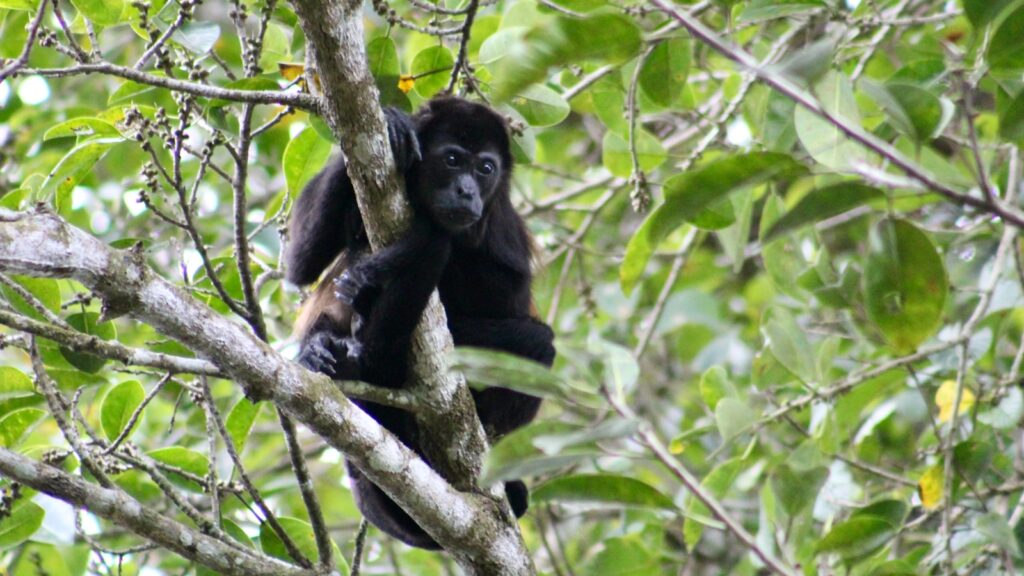
The extraordinary size and strength of Harpy Eagle talons directly influence their prey selection capabilities, allowing them to target animals that would be inaccessible to smaller raptors. Their specialized talons enable them to capture and kill mammals weighing up to 17 pounds (7.7 kg), including howler monkeys, sloths, coatimundis, and occasionally even small deer or anteaters. This prey profile makes Harpy Eagles the only aerial predator capable of consistently hunting larger mammals in the rainforest canopy, filling a unique ecological niche. The relationship between talon size and prey selection represents a classic example of evolutionary adaptation, where a morphological feature directly determines an animal’s ecological role. For birdwatchers, understanding this connection explains why Harpies inhabit specific forest types and why their conservation depends on protecting sufficient habitat to support their large mammalian prey base.
Comparison to Other Raptors
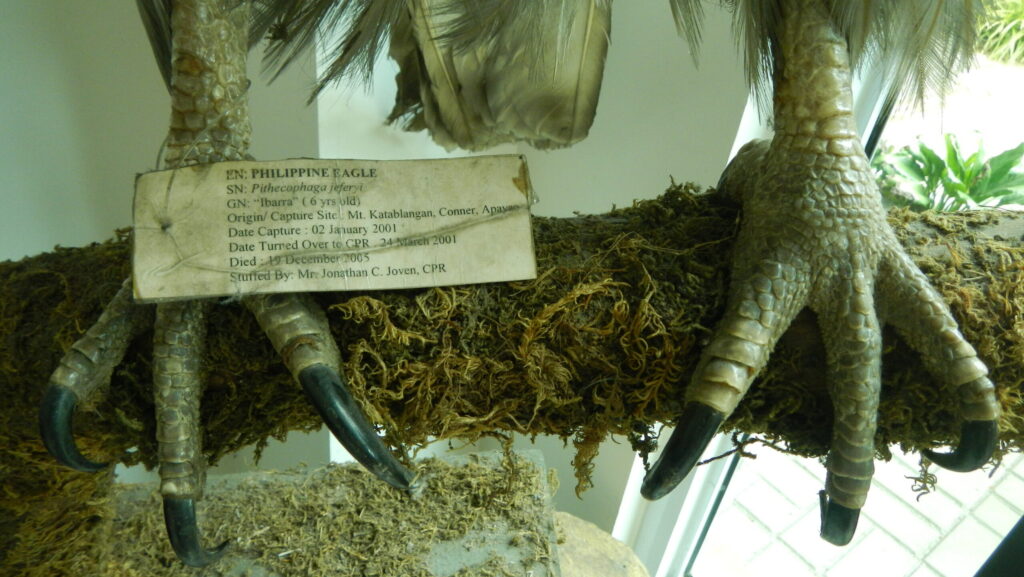
When compared to other eagles and raptors, the Harpy’s talons stand out as exceptional even among apex predators. The Philippine Eagle possesses slightly longer talons in proportion to body size but doesn’t match the Harpy’s overall talon diameter and strength. Golden Eagles, despite their larger overall size, have talons approximately 30% smaller than those of the Harpy Eagle. Other neotropical raptors like the Crested Eagle have similar but smaller talon structures, suggesting evolutionary convergence for hunting in similar rainforest environments. These comparative differences highlight the extreme specialization of Harpy Eagle talons and explain their unmatched ability to capture large, powerful prey from forest canopies—a capability that separates them from all other raptors in their ecosystems.
Observing Talons in the Field

For dedicated birdwatchers hoping to observe Harpy Eagle talons in the wild, certain viewing strategies can enhance the experience. Observation from canopy towers or platforms offers the best perspectives, as it positions viewers at eye level with the eagles’ preferred hunting and perching zones. Binoculars with high magnification (at least 10x) are essential for appreciating talon details from safe, non-disruptive distances. Patient observers might witness hunting behaviors that showcase talon usage, particularly during early morning hours when the eagles are most actively hunting. The most reliable locations for observing Harpy Eagles include dedicated protected areas like Panama’s Darien National Park, Brazil’s Cristalino Private Reserve, or Ecuador’s Tiputini Biodiversity Station, where populations remain relatively stable and habituated to limited human presence.
Conservation Implications

The specialized talons of Harpy Eagles underscore why habitat conservation remains critical for their survival. Their need for large-bodied prey animals, which they capture using their specialized talons, means they require vast territories of intact forest—estimated at 25-50 square miles per breeding pair. Deforestation directly reduces both hunting grounds and prey populations, rendering their specialized talon adaptations less advantageous in fragmented landscapes. Conservation programs increasingly highlight the Harpy’s role as an umbrella species, recognizing that protecting habitat for these talon-equipped apex predators simultaneously conserves countless other rainforest species. For wildlife enthusiasts, understanding the connection between talon specialization and conservation needs provides important context for supporting rainforest protection efforts throughout Central and South America.
Cultural Significance
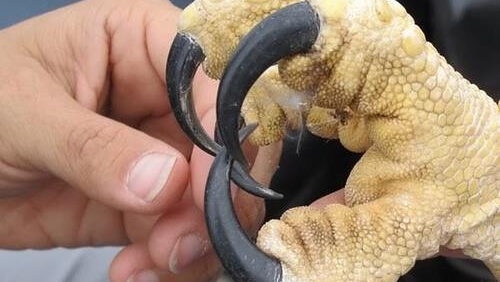
The impressive talons of the Harpy Eagle have influenced human cultures throughout their range, appearing in indigenous mythology, art, and traditional knowledge systems. Among many Amazonian tribes, the Harpy’s talons symbolize strength and hunting prowess, sometimes being preserved as ceremonial items or worn by tribal hunters seeking to channel the eagle’s predatory abilities. Pre-Columbian civilizations incorporated Harpy Eagle imagery, particularly emphasizing their talons, into religious iconography and elite symbolism. In more recent times, the Harpy Eagle and its distinctive talons have become conservation symbols in countries like Panama, where it serves as the national bird and represents the country’s commitment to preserving natural heritage. These cultural connections demonstrate how even specific anatomical features of charismatic wildlife can transcend biological significance and acquire deeper meaning in human societies.
Photographic Challenges and Opportunities

For wildlife photographers, capturing the Harpy Eagle’s talons presents both extraordinary challenges and rewarding opportunities. The dense rainforest habitat creates difficult lighting conditions, often requiring specialized equipment and techniques to properly document talon details without disturbing the birds. Most successful photographs come from established blinds near known nest sites, where adult birds may become habituated to limited human presence over time. When photographing, attention to talon positioning during prey handling or perching provides the most dramatic demonstrations of their size and power. Some of the most iconic Harpy Eagle images include comparative elements—such as prey items or perches—that help viewers comprehend the truly remarkable scale of these appendages against familiar references, creating powerful visual stories about adaptation and predatory specialization.
Conclusion
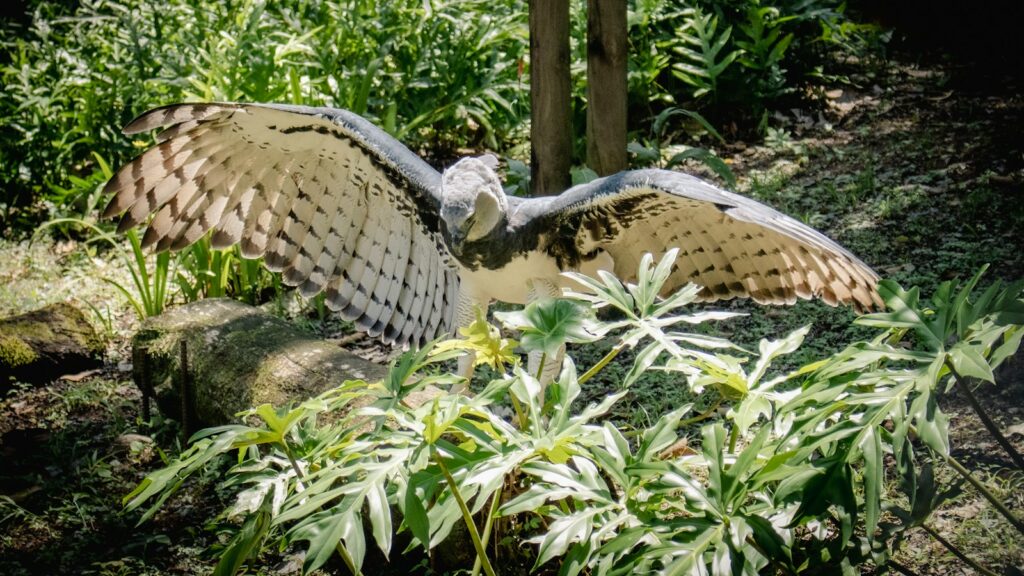
The massive talons of the Harpy Eagle represent one of nature’s most impressive adaptations—biological tools perfected through evolutionary processes to dominate the rainforest canopy. For birdwatchers and wildlife enthusiasts, these remarkable structures offer insights into predator-prey relationships, specialized hunting techniques, and the intricate connections between physical adaptations and ecological niches. Beyond their biological significance, these impressive weapons have captured human imagination across cultures and epochs, serving as symbols of power and precision. As rainforests face continued threats from deforestation and fragmentation, the specialized talons of the Harpy Eagle stand as a compelling reminder of what might be lost—not just a magnificent bird, but an evolutionary marvel representing millions of years of adaptation. By understanding and appreciating these extraordinary appendages, wildlife enthusiasts gain deeper appreciation for the complexity and wonder of apex predators and their irreplaceable roles in tropical ecosystems.
